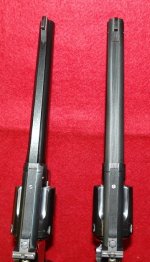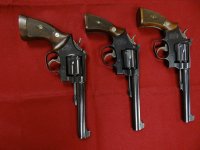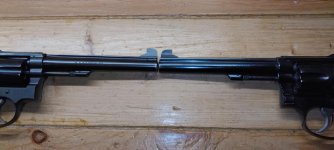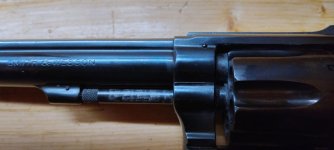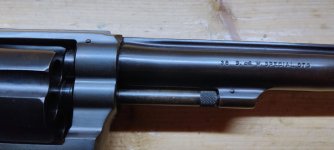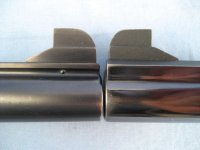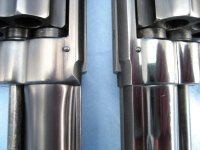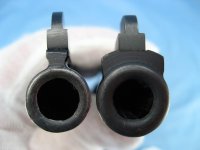The reason for all this is a segment of the lunatic fringe target shooters (REAL target shooters) fussed and fumed about the weight and balance discrepancies between the K-22, K-32, and K-38. The differences, of course, were beyond noteworthy----a matter of maybe two ounces---maybe two and a half. The exact particulars of all this may be found in Jinks' book, known as "History"----"The History of Smith & Wesson" to be more precise.
So-------S&W proceeded to mess with barrels and ribs, and made everything the same---loaded.
Now one has to wonder what happened when the first shot was fired, because, quite obviously, the three guns are no longer properly balanced---nor do they weigh the same--------and the more shots fired, the worse it gets!!!
Ralph Tremaine
As an aside, the 1st Model K-22 (the Outdoorsman), and the 1st Model K-32 (of the same era---pre-war) were followed by the 2nd Model of both (the post-war narrow rib guns)---and then the 3rd Models (the wide rib guns). Alas, there was no 1st Model K-38 (There really was, but nobody had enough sense to call it that----until later on---when nobody cared anymore.) Accordingly, the 1st Model K-38 is the post-war narrow rib. I tell you all this, just in case you're a collector---and want to move on to lunatic fringe collector's status where the rest of us are.
And just in case you might be wondering why you never heard of a K-32 1st Model, it's because there were only 94(?) of them made. That's either because of impending WWII---or because nobody cared (until now---when everybody wants one)------pick one.
And as another aside, I'm not so sure the guns pictured up above are both heavy barrels. I reckon if the pictures were taken showing the muzzle of each, or taken with the barrels side by side, the difference would JUMP right out at you! The rib width difference damn well would JUMP right out at you!
I once took one each of all these to the butcher shop, where they have a scale that weighs in FRACTIONS of ounces----took 'em loaded. That loaded business was frowned upon, so I have nothing further to report. Some folks just ain't got no soul!!!
Actually I didn't take them loaded, but only because I'd forgotten about that part of all this lunacy---and because I already knew some folks ain't got no soul!!!





